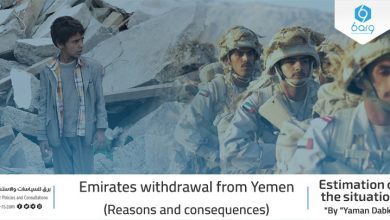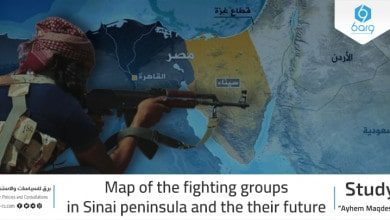June war 1967 documents in Israel State archive- General Introduction

“Everything started,
And everything ended.
Between the start and the end, joy, about which you were always alert, betrayed you. Everything changes from stones to thoughts; Palestine leaves you without saying good-bye. I was in shelter hung on the rope of difference between two very different days. Let the homeland hold its tongue a bit. Rivalry starts between you and life itself. The earthquake takes you and knocks you down. They returned to Yerushalayim: the general, the priest and the adulteress.”
Mahmoud Darwish
If it is possible to say that (1949-1947) war was the foundation war of the Israeli State, June 1967 war, no doubt, was the war of maintaining existence. A quick look at the then cabinet meeting minutes and at the discussions that occurred between the two wars will show the great influence of this war in maintaining Israel presence and reducing its existential anxiety and its change to ecstasy whose effects continue till this time. June 1967 defeat constituted an exceptional shock at the Arab and the Palestinian levels abbreviated by Mahmoud Darwish’s saying “Everything started, and everything ended”.
Due to the importance of this war, dozens of academic studies about the history of the war and its details on all the fronts were issued in the previous years. Lately, on the occasion of the passing of 50 years of the war, Israel State archive released the largest documentary collection about the war, starting from the moments of the first escalations reaching the detailed battles and ending with its effects on land and man. This new collection is distinguished from the previous ones in the state archive and in the defense ministry archive and others by its size and the diversity of its content. It will certainly pave the way for new readings of the history of the war and its consequences.
The most prominent documentary collections that were issued are 26 minutes of the sessions of the Israeli government starting from the session held on January 1st 1967 in addition to 23rd minutes of the cabinet that cover the sessions held between January 3rd 1967 though June 4th 1967 and 13 minutes that cover the sessions held between June 5th 1967 through July 19th 1967.
These minutes recorded the ongoing governmental discussions shortly before the war broke out on the battles on the borders with Syria and the escalation of the guerrilla operations launched through the Syrian and Jordanian lands. There was also the ongoing discussion on the Egyptian front reaching taking the decision of expanding the government and representing the opposition in it few days before the war. The minutes detail the ongoing discussion about the war decision and the size of the military operations on the different fronts and then the echoes of the international and local war in addition to the discussion of future of the occupied territories and the destiny of their inhabitants. Later, another collection of the security cabinet meetings minutes was released. This collection included 70 minutes starting with the minutes of the meeting on January 3rd 1967 through the meeting minutes of December 31st 1967. This collection, similar to the ones before, covers part of the ongoing discussion about the war and the decision-making mechanism. In these meetings, in addition, there are talks about the thinking of the Israeli ministers of Gaza future and the suggestion was to make the people there thirsty to force them to leave it.
In addition to these minutes, two files of the minutes of the foreign and security committee in the Knesset that cover the period from May 31st through October 20th 1967.
Despite the specific importance of the documentary collections mentioned, the rest of the other released files are not of less importance. About 728 files were also published covering different periods. These documents can be classified according to their topics as follows:
- Files that address political issues and others that address administrative issues issued by many official bodies the most prominent of which are the cabinet office which was run by Yaakov Herzog, Foreign ministry and the ministry of Justice.
- Files about the then active Israeli figures, such as Eliyahu Sasson, minister of police and Abba Eban, the foreign affairs minister. The most prominent files in this collection are those of the Chief Rabbi in Israeli Defense Army, Shlomo Goren that include documentation of his activities and daily actions in the war.
- The exchanged correspondences between Levi Eshkol, the Former Prime Minister of Israel, and a large number of the Jewish figures in the world. And the correspondences between him and a large number of Israel inhabitants regarding the course of the war and the future of Israel.
- Files related to Israel international relations. A large number of documentary files which include the documents of the exchanged correspondences between the Ministry of Foreign Affairs and its embassies in dozens of countries in the different world continents are available and they monitor the public opinion in different countries and its stance of the previous escalation of the war and towards the results of the war. The files show special importance from the Ministry of Foreign Affairs by publishing and circulating the Israel narration of the war. They also show propaganda activity to support the war efforts during and after the war. The files also include documents and correspondences with the UN and a number of influential countries on top of which the US and the Soviet Union.
- Files related to the discussion of the destiny of the Arab occupied territories in 1967 (the annexation of Al Quds, controlling the religious sites in it and the demolishing of some of the old places and building the Jewish block, Golan and Sinai for peace, early settlement in the Golan and the West Bank, establishing buffer zones in the Valley, the waters of the West Bank and the Golan, etc.) and the destiny of their inhabitants (displacing the people of some areas, establishing permanent shelters for the Palestinian refugees instead of the camps, displacing Palestinians to Brazil, setting Gaza immigrants in Sinai, etc.)
- Files related to the occupied lands management and the start of the early military rule of the occupied lands, especially the West Bank and Gaza Strip (statistical data, the holy places, tourism, the legal status, questionnaires, maps, UNRWA role, minutes of Al Quds civil council after the war, the suggested economic policies, etc.)
- Military files such as reports of the course of the war operations during the war and the previous borders battles. And files related to the start of the military rule in the occupied areas in 1967 (such as orders and leaflets of the Israeli Defense Army leaders in the West Bank) and the public mobilization and the internal front during the announcement of the emergency state. There were also documents about exchanging prisoners between Israel and a number of Arab countries.
- Military files and political correspondences related to the Palestinian resistance operations shortly before the war, the lunching of the Palestinian resistance against the occupation in the West Bank and Gaza Strip in addition to the beginnings of the War of Attrition on the Egyptian front (such as destroying the Israeli destroyer Eilat).
- Newspaper clips and summaries of the local and international media activities and the communication with the mass media in the whole world and the study of the local and international public opinion concerning the course of the war and its consequences.
- Looted Arab documents. The most prominent documents in this collection are the minutes of the local committee of building and city organization in Al Quds (October 29th 1961- January 3rd 1967).
In addition to these documentary collections, 318 audio recordings of news follow-ups from Radio Kol Israel were also released and 30 videos that document the different moments of the war. It is worth mentioning that the archive blocked some contents of the documents, but these can be ignored compared with the documents that were published in the ministry of defense and in some academic writings which were allowed to be released after they were blocked when they were published in the state archive. The most prominent is Tom Segev book “1967: Israel, the War, and the Year That Transformed the Middle East”.




